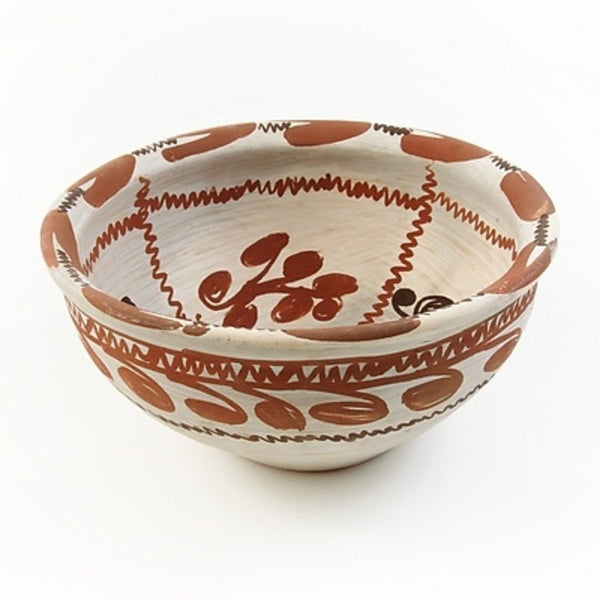THIS IS AN ARCHIVE OF EVERYTHING KIOSK HAS COLLECTED. TO MEET THE DIGITAL, WE HAVE A PHYSICAL, CURRENTLY IN STORAGE IN NEW YORK. NOTHING YOU SEE HERE IS FOR SALE. PLEASE USE AS A REFERENCE AND AN INSPIRATION AND PLEASE WRITE US IF YOU HAVE ANY QUESTIONS OR INFORMATION TO SHARE.
Handpainted Bowl
5.5" x 9"ø
Clay & Natural Pigment
MEXICO
Amantenango, elevation 6,000 feet, is located about a half-hour's drive south of San Cristobal de las Casas in Chiapas. To the east is a pine-covered mountain; to the west is open landscape. The town is renowned for its pottery; it is only the women of the town who are involved in the production. We arrived with no contacts, assuming since the place was so well known for its ceramics it would be easy to find the type of work we were looking for. I, always searching for authenticity, was looking for pottery done in the traditional style with natural pigments. What I had seen in the markets in San Cristobal were sweet objects, but painted with acrylic paint and often varnishedso we headed to the source. We arrived and found several dealers in shops along the main road selling acrylic-painted pieces; it was all wrong, we had to dig deeper. We walked into the town just as school was letting out and over time found a small shop. Luckily they pointed us to Guadalupe Diaz Ramerez, the maker of this piece. Now, the story could go on forever. What followed was an hour of shy communication and then three hours of discussion and demonstration in the art of traditional Amantenango ceramics. We all spoke very little Spanish as they mainly spoke Tzotzil, an indigenous language. We discovered where the pigmented clay comes from (the local hills about two hours' walking distance away); that the paints she and her daughter-in-law use are natural pigments they grind with water; the brush is made of her grandson's hair; she uses no pottery wheel, only a board with the dry clay on it to permit movement; and they use no kiln, only a wood fire which, when it is done burning, leaves the pottery and ashes behind. Amantenango pottery is considered "primitive" because it is unglazed, rough to the touch, and lusterless. But perhaps we have it the wrong way around.
